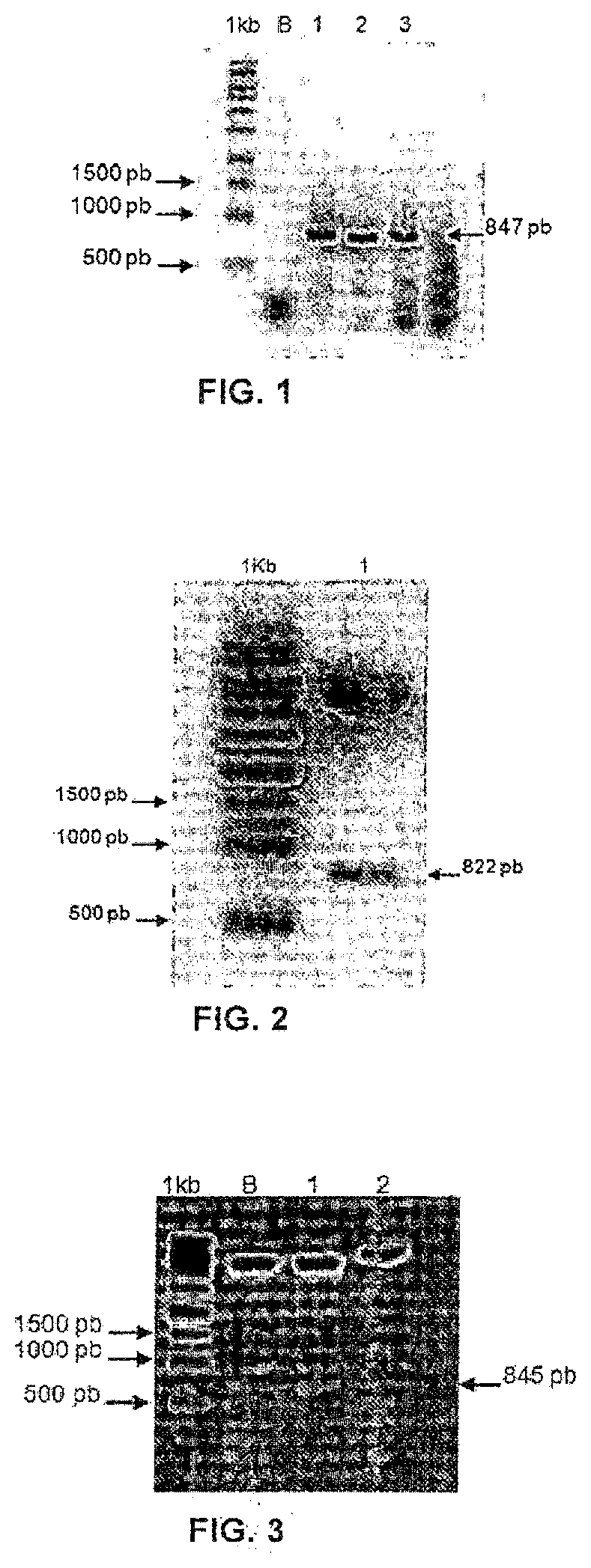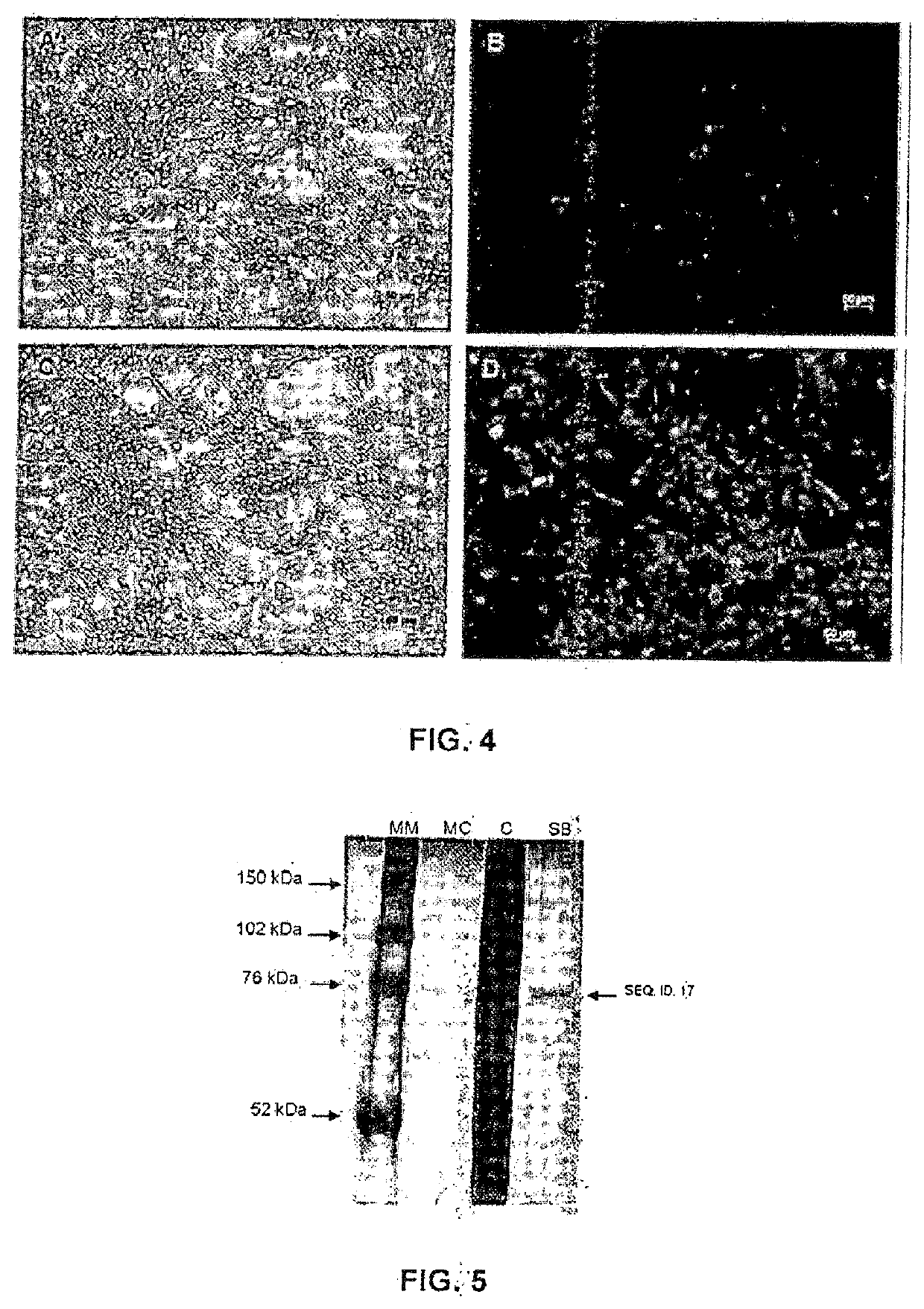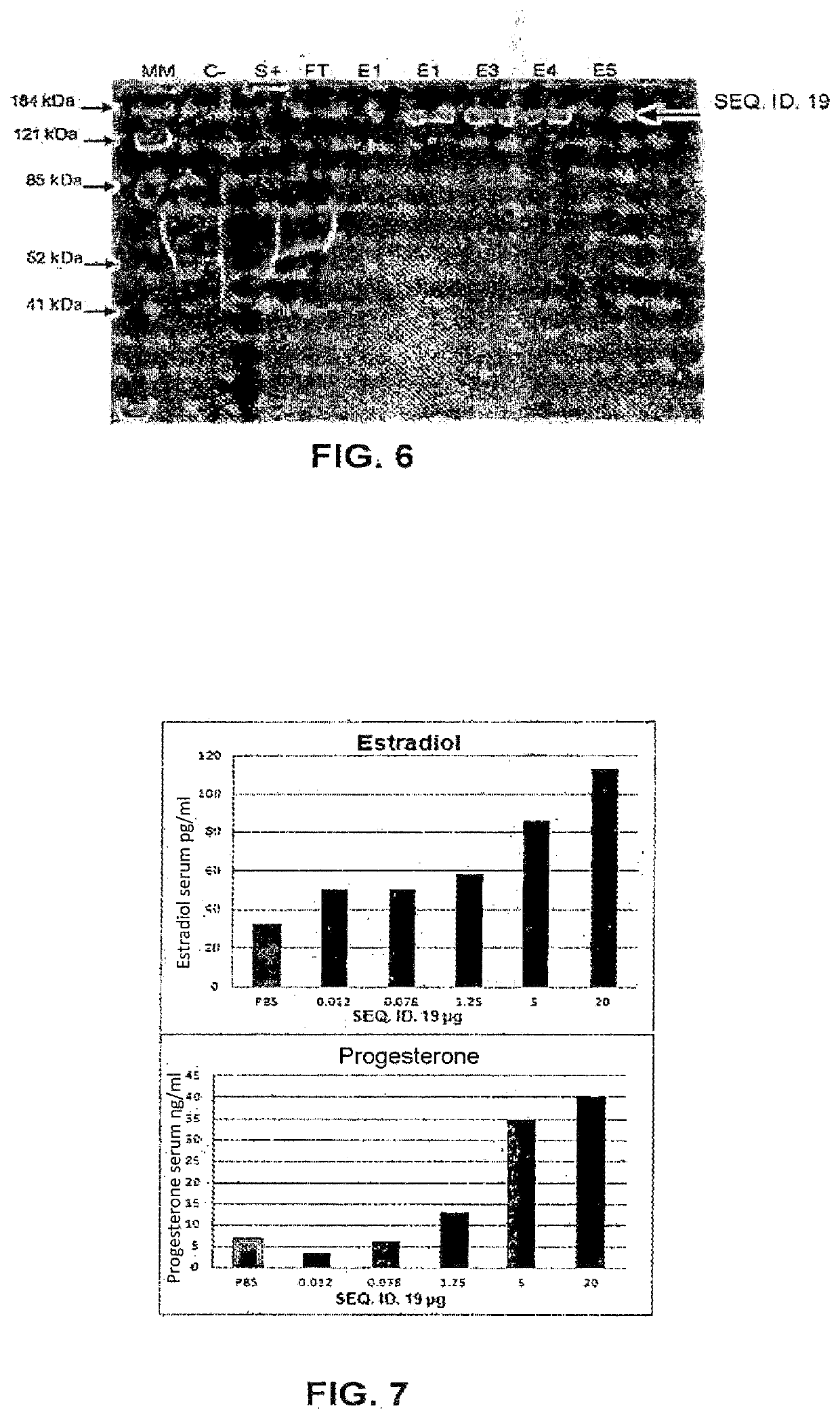Method for producing and purifying hybrid or non-hybrid recombinant glycoprotein hormones, hybrid or non-hybrid recombinant glycoprotein hormones, expression vectors and uses of the recombinant glycoprotein hormones
a technology of recombinant glycoprotein and hormone, which is applied in the field of producing peptide hormones, can solve the problems of not finding reports in the state of the art concerning the methods of obtaining and using artificial insemination and superovulation protocols
- Summary
- Abstract
- Description
- Claims
- Application Information
AI Technical Summary
Benefits of technology
Problems solved by technology
Method used
Image
Examples
example 1
Construction of the Cloning Vector of SEQ. ID. 16
[0060]The elaborated gene fragment related to SEQ. ID. 16 was commercially synthesized and amplified by PCR (FIG. 1), using the oligonucleotides (SEQ. ID. 1, SEQ ID. 2 and SEQ. ID. 3). The electrophoretic analysis of the amplification procedure was performed on agarose gel (1%) and with the use of a 1 Kb molecular size marker. The samples tested were: negative control of the PCR reaction (lane B); and gene fragment (SEQ. ID. 16) amplified of approximately 847 bp (lanes 1, 2 and 3).
[0061]SEQ. ID. 16, was cloned into a plasmid vector (CloneJet-Thermo) and used to transform W5a competent E. coli cells by heat shock, and, after selection of recombinant clones by cleavage, the sequence confirmation of SEQ. ID., 16 was performed by a chemical nucleotide sequencing method.
example 2
Construction of the Expression Vectors of SEQ. ID. 38 and SEQ. ID. 39
[0062]Once the SEQ. ID. 16 was confirmed, the recombinant clones were cleaved with the Xhol and EcoRI enzymes, for removing the fragment of the SEQ ID. 16, and cloned for generating SEQ. ID. 38 and SEQ. ID. 39. Selection of recombinant clones was done by cleavage of SEQ. ID. 38 and SEQ. ID. 39. The electrophoresis of clone cleavage products was done on agarose gel (1%) using a 1 Kb molecular marker. As seen in FIG. 2, the clone after cleavage with XhoI and EcoRI is found in lane 1, where the band relative to SEQ. ID. 16 is seen. In FIG. 3, the samples tested were: negative control of the PCR reaction (lane B); where the clones after cleavage of SEQ. ID. 39 are in lanes 1 and 2), where the band referring to SEQ. ID. 16 is seen. Confirmation of the perfect sequence of SEQ. ID. 16 was carried out by chemical DNA sequencing.
example 3
Transfection of Mammalian Cells
[0063]For the generation of expression cell lines (HEK 293 and CHO-K1), 6-well 500 μL plates (24-well plates) were used for transfecting 800 ng of SEQ. ID. 38 and SEQ. ID. 39, using 2 μL of lipofectamine 2000 (Thermo). As a control, cells were transfected under the same conditions with SEQ. ID. 48. Cells were cultured on Freestyle Serurm Free (Thermo) or DMEM medium (Sigma) containing 10% fetal bovine serum and 1× antibiotic / antimycotic solution for 24 hours for further addition of 400 μg / mL geneticin (G418, Sigma-Aldrich).
PUM
| Property | Measurement | Unit |
|---|---|---|
| Body weight | aaaaa | aaaaa |
| Fluorescence | aaaaa | aaaaa |
| Affinity | aaaaa | aaaaa |
Abstract
Description
Claims
Application Information
 Login to View More
Login to View More - R&D
- Intellectual Property
- Life Sciences
- Materials
- Tech Scout
- Unparalleled Data Quality
- Higher Quality Content
- 60% Fewer Hallucinations
Browse by: Latest US Patents, China's latest patents, Technical Efficacy Thesaurus, Application Domain, Technology Topic, Popular Technical Reports.
© 2025 PatSnap. All rights reserved.Legal|Privacy policy|Modern Slavery Act Transparency Statement|Sitemap|About US| Contact US: help@patsnap.com



